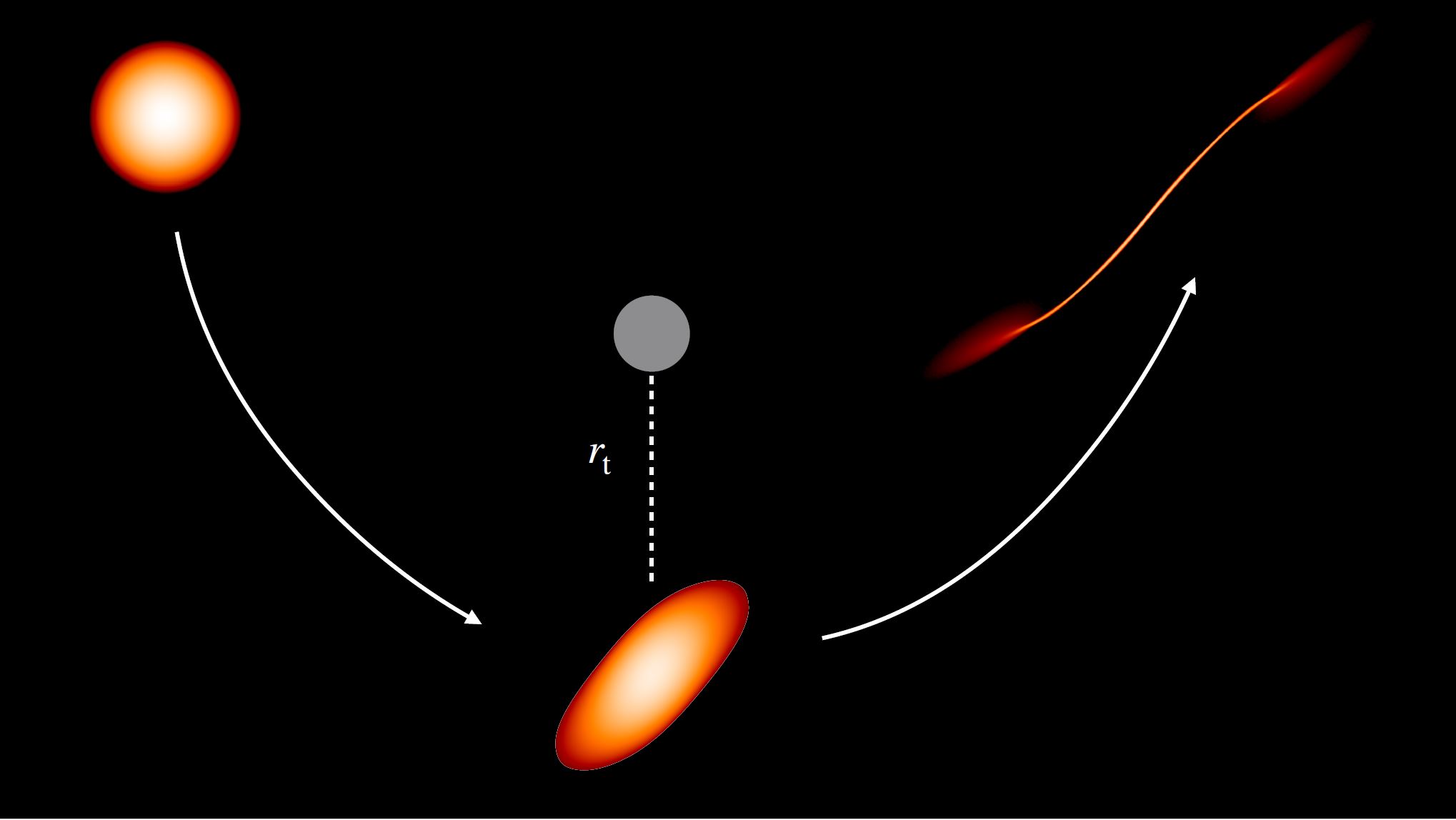Any object in the Universe experiences a tidal force, which is the difference in the gravitational force across the size of that object. The Earth experiences tides from the Moon (and the Sun) owing to the fact that one side of the Earth is closer to the Moon than the center of the Earth, whereas the other side is farther away. This difference in gravity creates an effective force that stretches the Earth approximately in the direction of the Moon, and we interpret this stretching as the high tides (two of them — one on the near side of the Moon and the other on the far side).
Similarly, a star, such as our Sun, approaching a supermassive black hole — a black hole with mass millions to billions of times the mass of our Sun — is stretched by the tidal force it experiences, where the gravitational force is due to the supermassive black hole. In this case, the tidal force of the black hole becomes so extreme that it can pull the star apart, provided that the star comes sufficiently close to the black hole. This “spaghettification” process (see the image below) is known as a tidal disruption event (TDE), and the ensuing accretion of stellar material onto the black hole produces a luminous and optically bright outburst that we detect to cosmological distances.
At Syracuse University we are studying the process of tidal destruction, using both computational techniques (including the supercomputer at Syracuse) and analytical modeling. The aim of our research is to understand the electromagnetic signatures of TDEs from a theoretical side: given the star and the supermassive black hole, what is the output of the tidal interaction, i.e., how much light is produced and at what wavelengths? By answering this question, we can relate our observations of TDEs to the properties of supermassive black holes (and the stars they destroy) across cosmic time.

